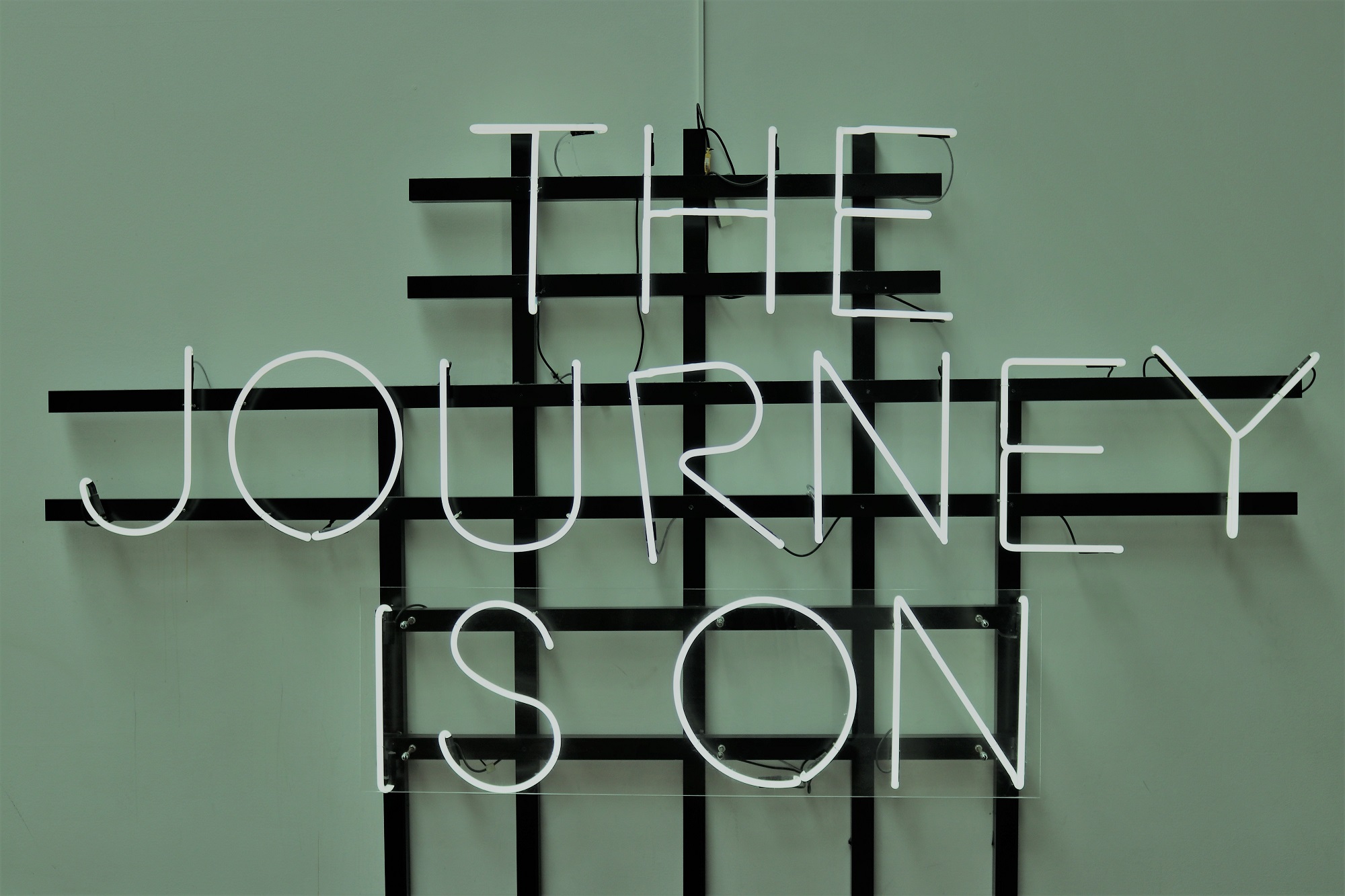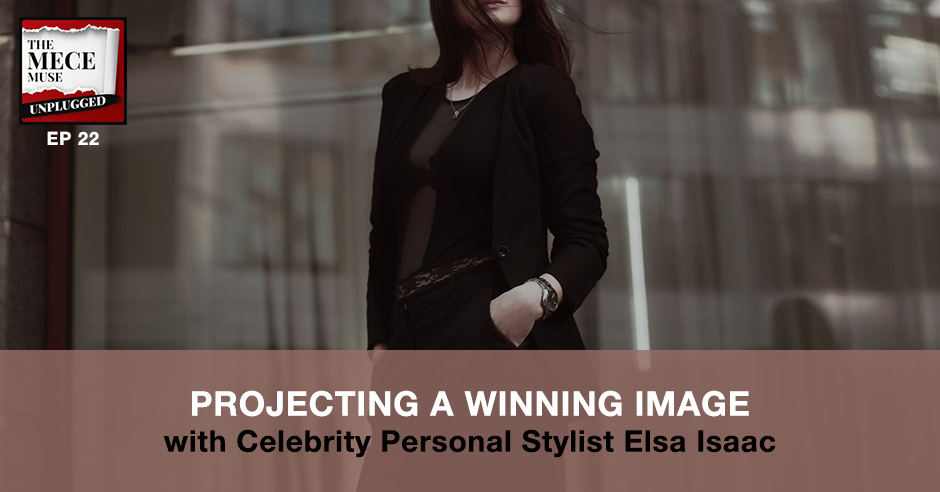In this Quick Wins episode, we discuss the importance of your image in consulting with personal image stylist Elsa Isaac. Whether you realize it or not, scientific studies have shown that you are being judged by how you dress, especially in the workplace, which could impact your credibility, promotions, project opportunities, and raises/bonuses.
Style image is an important component of your brand and because it is such a personal choice, it is not always openly discussed, making it sometimes the “elephant” in the room. Great consultants take their personal image very seriously.
Benefits of dressing well and creating a personal signature style:
- Being well dressed can help you build relationships
- Enhances your credibility and create a lasting impression when working with clients
- Image can boost your self-confidence and elevate your energy in a way that helps you performance
Elsa helps us understand why image really matters & dispels the myth of image. “Image doesn’t have to be a vain thing” Elsa shares. She dissects how image could impact performance, shares her definition of being well-dressed, and provides a framework for creating a signature style and shopping techniques.
Listen to the Episode Here:
Podcast: Play in new window | Download | Embed
Subscribe: Apple Podcasts | Email | TuneIn | RSS | More
We will be doing a segment that I call Quick Wins. Quick Wins is when I have an opportunity to connect with individuals, discussing ideas, products, or services to help round out your consulting toolkit. We get a chance to connect with Elsa Isaac. She is a personal stylist, specifically for women entrepreneurs. We have a conversation that is applicable to any gender. If you are looking to become a great consultant, you have to take heed and create a personal brand that helps you become effective in doing so. Image is so important. It’s such an elephant in a room. No one likes to talk about image, but to be a consultant, in order to be effective, you have to show up in a manner that helps you create a credible impression. It’s important to figure out how to do that in a way that makes you effective but that’s authentic to you. Elsa helps us create some techniques and tools that you can use and take away.
After my conversation with Elsa, I did a social experiment. I don’t like to go shopping, but I got a chance. I said, “I’m going to take some of her techniques.” I did a couple of her exercises, and I took a shopping trip. I went into a retail store, and it was one of the more effective shopping experiences I had. I ended up picking a lot of garments and different types of outfits and nailed it. Normally, when I go out shopping, I feel like I’ll have all these different clothes I’ll like look at and try on, and then I will leave feeling frustrated and not buying anything. That’s why I try to stay away from shopping sometimes, I just shop online. Using some of Elsa’s techniques, it gave me a framework. Consultants love framework, and so this was perfect. You’ll find a lot of value in the techniques that Elsa covers.
In episode 23, we get a chance to connect with a go-getter interested in breaking into consulting. We have a great conversation on a way that he could look at creating an experience and a pathway into a prestigious consulting firm. Stay tuned next week to talk about that. For today, definitely take heed to some of the techniques that Elsa talks about. Check out our website, MECEMuse.com on our show notes to get some of her freebies and some tools and information that you can use to round out your toolkit. With that, let’s get started.
Interview with Elsa Isaac
Elsa, thank you again for joining us on The MECE Muse Unplugged. How are you?
I’m great. Thank you for having me. I’m excited to be here.
When I heard about your services, I was talking to some colleagues about doing a segment on personal branding and image. I was reaching out to them and asking them, “Who are some experts you think I should reach out to?”They unanimously referred me to you. I’m super excited to connect with you. Maybe we can start with you taking a moment to introduce yourself to the go-getters of The MECE Muse Unplugged.
My name is Elsa Isaac and I am a personal image stylist to women entrepreneurs. I’ve been doing this close to fourteen years. I got my start in the music industry. I did a lot of music videos and album packaging for Canadian artists in Toronto. I’m Canadian. I moved to New York about eleven years ago and started doing a lot of commercial work and magazine stuff. Eventually, I wasn’t fulfilled in that industry. I knew I didn’t want it to do commercial styling anymore and I thought I would have to stop styling because it wasn’t fulfilling anymore, and then I found Marie Forleo. I got on her list, took an old virtual course of hers, and that was when I rerouted my skills and realize that I want to work with real women who have real everyday challenges and need to be told that they are beautiful.
They just need to learn how to create and cultivate a wardrobe that reflects who they are as a person. That’s what makes a woman and anybody beautiful; as long as they can own and be proud of the person they are and accurately reflect that in their clothing, then I feel like that is always where the intersection where women feel like themselves and feel proud, feel happy, and feel beautiful. I’ve been doing that for about seven years now.
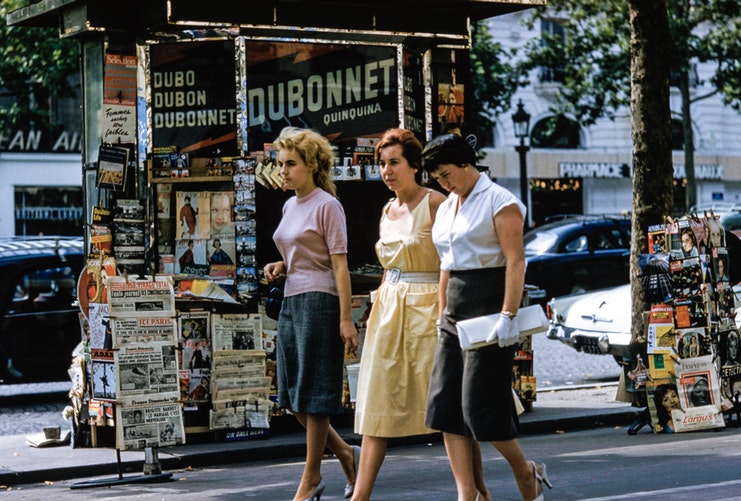
I can definitely sense the passion that you have for your work. You have officially gotten the coolest job we’ve ever had on MECE Muse Unplugged. You mentioned Marie Forleo. I’m a huge fan of Marie TV, and as she always looks fabulous. You talked about from going from Toronto and then coming to New York and then how you transitioned from commercial to a more personalized type of styling. Can you take a step back and help us understand how did you get into this line of work in the first place? Did you know you wanted to do it? Who are the celebrities you have you styled as well?
I had no clue what styling was. My goal was to be a clothing designer. In the program that I was in college for fashion, it branched off. In the first year, you did both design and you did both fashion marketing, so you could decide what you wanted to branch off in. As much as I wanted to design, I didn’t want to sew, and there was a lot of sewing involved in the design portion of the program. I decided to go to the marketing. We did have little projects throughout those three years where some styling was involved. I don’t even think that was my first foray. My very first foray into styling was I was working part time at a bank to support myself through school. A friend of mine who also worked at the bank was in the music industry.
Him and his partners were doing a video for one of the artists who happen to be his best friend and was a big artist in Canada. He came up to me one day and said, “We’re doing this video and we want you to style the video.” I looked at him and I was like, “Why? I don’t know what that means. I’m a student, why are you looking to me? I’m going to ruin your project.” He wouldn’t let it go, and he was like, “You’ll be fine. We’ll walk you through it. You’ll have a credit card.” He wouldn’t take no for an answer, so I did it and agreed to doing it. I remember feeling so nervous that I was going to ruin this project. When I say zero, I mean zero experience and know how. Not only did I have to style him, there was an entire band. There were extras. There might have been twelve people total. I did the shopping, and I remember the day of the video shoot, after each outfit I put together, someone would come up to me and comment on the outfit that so and so was wearing. I was like, “Did he tell them to reassure me? Is he telling these people to come up to me? This is crazy.
At the end of the day, a very long thirteen-hour day, he came up to me and he said, “I knew you could do it. You did such an amazing job. Here’s a check.” I was like, “What? Are you like serious? I didn’t screw anything up?” That was it. They ended up hiring me for a bunch of their projects after that. I literally fell into it. I had no idea what it was, but I was amazed that you could not know about a career and then be naturally good at it. I don’t even know how he even thought about me doing it, but I’m grateful to him because he saw something. I definitely don’t think I’d be doing styling if it wasn’t for him.
I always say that when something is meant to be, it is truly meant to be. It sounds like serendipity, how you fell into this work. Maybe share a couple of names of some celebrities that you’ve styled.
I’ve worked with Katie Couric. I have worked with Lenny Kravitz. I’ve worked with the cast of the Cosby Show. I’ve worked with Phylicia Rashad on her own. On the business side of celebrities, Kate Northrup, Kris Carr, and Marie Forleo. It’s been great and fun. It’s hard, as any business is, because it’s not just the glamour part that you have to manage. I’ve had many assistants who thought it would be all glamour and have decided otherwise after seeing what it takes to be in the industry or in the business. It’s been an amazing journey for me.
There’s tons of scientific research done that shows that image matters. Dressing well can potentially increase your income or the longevity of your career and can impact promotions. There’s statistics that say people form a lasting impression of you within 0.1 of a second of meeting you. Employers now screen social media networks and they’re seeing pictures of you. As much as people may feel like image doesn’t matter, image does matter. As an expert in this space, why does image matter in your world and how have you seen it impact or not impact someone’s life and career?
It’s important to take away the negative stigma that people have with image. They think it’s a vain thing, but I also think that’s mainly because people view image to be trying to live up to a certain type of image. If we view image in the sense of you personally, how can you look and feel your best? Your version of that, not a magazine, not a runway. When you think of it that way, it’s not vain at all. One of the things I always like to tell my clients is that it affects how you perform. How you perform in what you do, whatever it is that you do in your line of work, is a direct correlation to your energy and how you’re vibrating on that particular job or day-to-day. It has been scientifically proven that once you feel who you are and you are confident in your appearance, you can’t help but perform optimally. That’s how it works. Being aware of that, understanding and comparing your performance to how you do when you’re in your sweats and t-shirt, it’s about selecting those pieces that still represent you no matter what article of clothing you’re wearing.
A client forwarded me this great article that spoke to the importance of image. It talked about the Catholic Church and how back in the day, when these men were out there spreading the Gospel, if they had walked around in what our equivalent is now of let’s say jeans and a t-shirt or sweatpants, there’s no way people would have taken them seriously, and they knew that. Their information was absorbed differently because they seemed legitimate. They had these elaborate robes, they built these beautiful churches with these amazing hand-stained windows. It was important to them because their message was important. They knew that in order for people to receive the message, they needed to look like they knew what they were talking about, and they delivered this information differently too.
If you think about it in that sense, your work in the world or whatever it is that you do is important. There are people out there that need your work, but it’s important to understand that you have to be able to deliver it in a way that they can hear you. There’s so much noise in this day and world of technology. There’s so many people out there with businesses. There are so many people out there with Facebook accounts, Instagram accounts, and Twitter accounts. It’s your job to make sure that they can resonate with you and they can hear you and they believe you. I always love using that example because I feel like gets the point across and makes you understand that it’s not a vain thing to make image and how you appear a priority.
Thank you for de-bunking that perception because that is so spot on. I liked how you mentioned the fact that image can impact your performance. I find that so true. I work from home at times with my role. There’s times when if I know that I have an important client meeting or I’m going to be presenting, even though people may not be able to see me, I get dressed up and I stand because I feel that there’s an elevated energy that I have when I’m completely dressed up. I feel more confident and that is no longer in the way of my message.
I feel like sometimes if you know you’re not looking your best, it comes off as a distraction. You cannot know it and you may not realize you’re giving it off, but the people feel it, they receive it that way, and they don’t know what it is. They may misinterpret that energy as uncertainty, that maybe you don’t know what you’re about or you didn’t do your research. Sometimes the root cause has nothing to do with what you’re saying or your message or what your work is, it’s because of your image. It’s so critical.
What would you say is your definition of being well-dressed? I know me, personally, image is important. I have a couple of commandments that I personally have in terms of how I do things. For example, I never leave the house and don’t have my hair or my nails done. That was something my mom drilled in me. She used to say, “Make sure you don’t leave the house without a set of pearls.” I don’t do that, but I always make sure that even if I’m going up the street, going to the supermarket, I always make sure those two fundamental things are done. For me, that’s my baseline for well-dressed. I would love to hear what your definitions of well-dressed.
I love that you mentioned that because that’s going to look different for everybody. I love that you mentioned that what yours are and how those two things alone make you feel put together. There’s plenty of days when the last thing I want to do is do my hair and I just throw on a head wrap because it’s quick and it’s easy and it’s stylish for me, and it is part of my signature. I call those things your signature. I start with basics, in terms of put together, because once you have mastered the basics or the fundamentals of styling, it doesn’t matter what you put together. It starts before the clothing. The top thing is to know your body shape. Most women are in denial or don’t want to know, but it starts with first knowing your body shape. Then it’s coming up with three words that describe how you want your clothes to make you feel.
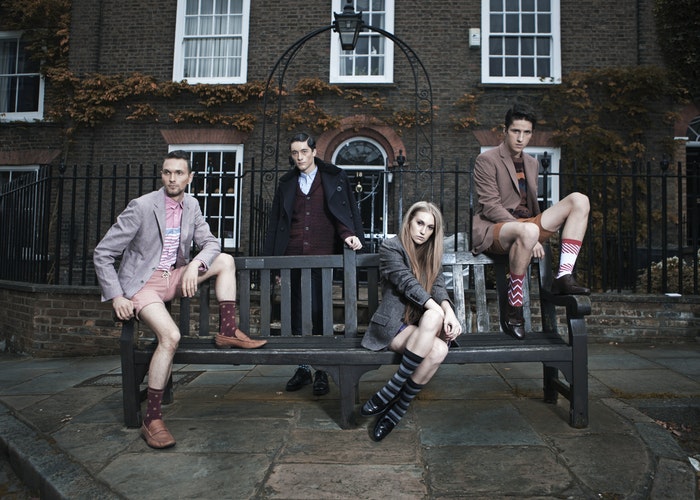
If you’re jotting this down and you come up with more words, I would say get all the words that are in your head out on a piece of paper and then keep narrowing them down until you end up with three. Then create a visual board, whether it be on Pinterest or in real life, of style images that inspire you in some way. It doesn’t have to be a complete look, the model doesn’t have to have your body shape, the model doesn’t have to look like you, but things that you are drawn to and attracted to. Pin those things or post those things, paste those things on a board, and look at what patterns have formed in the pictures that you have selected. Use all of those things as filter questions when you are picking out a garment, whether that be in your current closet or whether you’re out in the store shopping for new garments.
Forget trends. Forget trying to look apart, whether it be in your corporate office or trying to fit in somewhere, incredible signature style starts with the inside out. These filter questions help you focus on you first. What happens is you end up being so hyper critical of clothing that you’re only choosing the things that resonate with you. Once you start to curate and start attaining clothing that has passed these filter questions, it doesn’t matter what you put on or how you throw it together. They end up being these versatile wardrobe items that resonate with who you are. My definition of well-dressed is dressing for who you are, dressing and representing the best part of you. Those three steps help you get there.
First, edit your closet. That’s the only items that should remain and should pass and answer ‘yes’ to at least two of the three describing words. The body shape should be spot on, and it should absolutely inspire and be similar to the visual curated images that you have developed because that will all guide you and not distract you. I know that’s a huge issue with a lot of people. They get so distracted by the sale, peer pressure, or by whatever. This will help guide you to stay focused on what matters and what resonates with you because that is the difference.
That is such a great technique. I have never evaluated my style from that perspective, but it makes a lot of sense to go back and see the style patterns, the words, and then the theme that’s coming. That’s such a consultee’s way to look at it.
That’s part of the reason that people are so frustrated with style because for whatever reason, a lot of us assume that it should it should come naturally. You have to create time and space for it to be a priority for you. Those things help you give some thought into it and not blindly purchase and regret later. You blindly purchase, and you never wear it or you blindly purchase, and you’re totally uncomfortable with it. This helps you focus on what you’re doing and why you’re doing it. If you’re not doing it for the right reasons, walk away. I always say, “You will say ‘no’ to more garments than you will say ‘yes’ to.” That is totally okay because it’s your job to filter. I can’t even tell you the multitude of designers out there who are trying to vie for your attention. Their job is to sell clothes; your job is to discern the clothes specifically made for your body. It’s okay that you say ‘no’ to 80% of it. That’s a good thing.
You have some good rules of thumb. You talk about your definition and dressing for your style. A couple months ago, a mentee of mine works in an environment where people are, for the most part, jean casual-esque. Sometimes business casual, but it’s a blend, and she prefers to stay dressed. She prefers to dress up, and she sometimes get teased by her team members because they feel like she’s a little overdressed. What would be some advice you would give her? Her personal style is she likes to be overdressed, but she’s in an environment where that’s the lay of the land. What would you say? How can she still be effective? We talked about energy. How can she stay effective without compromising the dynamics of her team?
If she understands that she feels best in the type of clothing that she feels best in, I’m assuming that it’s because she’s performing also. It helps to perform at an optimal level. I don’t think she should change it, unless she’s being asked to. It’s a totally personal, individualized thing, style. If I were to see her, unless she wanted to change something about it, I honestly wouldn’t advise her, because if she feels empowered and confident and driven. All the reasons why we dress, the reason why we want to feel how we want to feel, if she’s feeling them already, I don’t know that I would change that. I will feel like I’d be imposing philosophies, or in her case would be trying to fit in.
It would be a different question if she was dressed down. I know I’m not answering your question exactly, but it’s honestly how I would approach the situation. I don’t know how she dresses exactly, but maybe she could continue to wear dress pants and dress skirts, but I would do something like maybe a well-tailored t-shirt or maybe a metallic t-shirt, or maybe a different textured t-shirt to bring it down some. Maybe use a blazer, maybe use a leather jacket or a leather blazer in place of a regular blazer. There’s so many different ways to create a feeling, as long as it still remains authentic to who you are.
Clothes can evoke emotion, whether we realize it or not. Creating a feeling, curating the image, projecting that energy, these are basics. It doesn’t cost a lot to think about these things and then to put them into action. For you is as an expert, what are some of your top fashion no-no?
My biggest one would probably be fit. Anything ill-fitting. This can mean anything that’s too tight and that’s too baggy. If there’s a button missing, anything that has to do with fit ruins everything. You could spend a thousand dollars on a dress. If that dress does not fit you perfectly or well, it looks like it’s a $50 dressor maybe even less. It’s important to look for the details that are built and created to make a garment fit well and to not be so hung up on a number in terms of size. First of all, they range dramatically from one design to another. They range dramatically sometimes within one designer. Just look for what fits and pay attention to the details because the details matter.
I have this freebie that I created. I don’t think you need to have an entirely expensive wardrobe. I am a big fan of mixing high and low. I’m probably a queen of showing up in a garment that’s from H&M that nobody believes it’s from H&M. I wanted to help people discern how to look for those little things that differentiates a well-made garment from an unwell made garment regardless of price. You’d be surprised how you can curate a wardrobe that’s less expensive than you would believe it was just by paying attention to all the small details in a garment. It takes more time, but in the long run, it’s going to make you happier and you’re going to have a wardrobe that you’re excited for and a closet full of clothes that you’re excited to go and look at every day.
I can’t personally wait to get a hold of your freebie. I will definitely be adding it to my toolkit and taking a look at it. If you can share the link, we’ll share it in our show notes. If you’ve got any last thoughts or remarks on dressing up and image and personal branding from a consulting perspective, any last tips you want to share?
One of the things that I love to tell my clients is, “Before you go out shopping, start with what you have.”Start with your closet and apply those three elements that we talked about earlier. Does it suit my body shape? Does it make me feel at least two of my three describing words? Is it on my inspiration board? Is it something that I am drawn to and that I love? If you apply these things to what’s currently in your wardrobe, try everything on in front of a full length mirror. Give yourself a two-hour block of time to relax and enjoy the process, and go through everything and pay attention to how you feel.
Ask yourself, “Why would I want this? Is it the fabric? Is it because it doesn’t fit well?” Be really discerning and giveaway what isn’t working. Create a pile for anything that needs to be altered if that is the solution for the garment. Hopefully, you’ll be left with the key pieces in your closet that you currently love and use that to build an addition to it, to shop for things that will fill gaps in your current closet. Look at what you have first before you go out and spend all this money on new clothing. It’s practice for when you do go shopping, and you’ll be surprised at what you discover about yourself and what you feel good in.
I didn’t really know the power of tailors until my wedding. I had to have my dress put in, and it was actually inexpensive, given the impact not only on my wedding dress, but I ended up having her do other articles of clothing. Now she’s part of my toolkit now, so if there’s certain things I buy, I go to her. It’s inexpensive, but finding a good tailor is an important contact that should be in your cell phone. If you are serious about building a personal brand, serious about your craft as a consultant, getting a tailor will be one of the best things you’ve ever done.
I’m glad you highlighted that point, because you’re absolutely right. It makes such a difference, and one of the things I say often is, “Don’t expect things to fit you off the rack instantly.”If you do find that, consider that like winning the lottery because it’s common for things not to fit you because these designers are creating garments to fit as many different body shapes as possible, so don’t take it personally. Don’t be upset. This has nothing to do with your body shape. You are perfect as you are, but a tailor will help eliminate a lot of that stress that we do have when we are in the dressing room. If you need to size up and then tailor down, do that. Consider that when you’re purchasing something, consider the cost of a tailor before you purchase. I always buy it and take it to a tailor, see how much it will cost. If it’s too much, then I can return the item. It’s a game changer for sure.
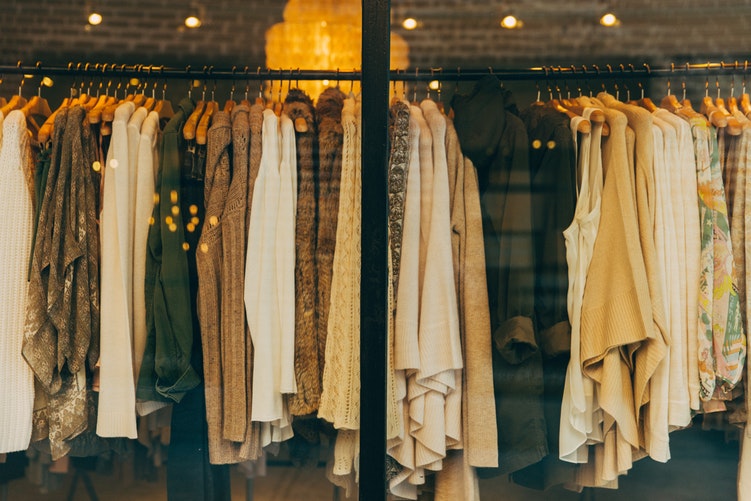
What are some other ways you’ve found the jewel of tailors?
If people are taking wedding dresses to a tailor, that usually means they’re well-skilled. It’s not easy to tailor wedding dresses, especially the complicated fabrics and beading and design. That’s always a good sign. If it’s a new tailor, I always like to give them something simple, whether it’s a jean hem or pant hem, something simple and then examine the stitching and how well they’ve done on that. Then move up to something a little more complicated. You could do that between two tailors, maybe give two different garments to each and assess. Start with something small, take a look at how their craftsmanship is, and then add to that Yelp. I think it’s the best way to choose. Personal referrals are always great.
Can you share how people can get a hold of you if they’re interested in connecting with you online?
I have my ElsaIsaac.com site. I have tons of resources on there, I have a body shape calculator where you can enter your measurements and it’ll let you know what your body shape is. There’s also guides to help you dress for your body shape, whatever that may be. I’m also on Facebook and Instagram.
Thank you so much for being on the show.
Thank you for having me. This is such a fun conversation.
You gave so many actionable techniques and toolkits, and this is what the segment is all about, so you’ve nailed it.
Thank you, Elsa and thank you, my go-getters. This is Christie Lindor signing out for The MECE Muse Unplugged pop-up podcast. Here’s to your journey to greatness
Links from today’s episode
- Elsa Isaac
- Marie Forleo
- Marie TV
- Kate Northrup
- ElsaIsaac.com
- Elsa Isaac’s Facebook
- Elsa Isaac’s Instagram
About Elsa Isaac
 I’m Elsa, a pro fashion stylist based in NYC. I’ve been Lenny Kravitz’ stylist, Katie Couric’s stylist, Marie Forleo’s stylist. And now?
I’m Elsa, a pro fashion stylist based in NYC. I’ve been Lenny Kravitz’ stylist, Katie Couric’s stylist, Marie Forleo’s stylist. And now?
I’M YOUR FASHION STYLIST.
Why am I?
BECAUSE you’re successful and want to look the part. But you hate shopping. You have a few go-to outfits but other than that, your closet makes you cry. BECAUSE you have style envy, to the tune of: “I’d love to rock a look like that but I wouldn’t dare.” BECAUSE maybe you don’t pore over Vogue or have runway lust, but you know how you feel when you look great — and dammit, you want to feel and look that way every day.
AND ME? THAT’S EXACTLY WHAT I DO.
I find and put together the perfect clothes for your body.
From special pieces to mix with your favorite skirt or jeans, to ready-to-grab, head to toe looks, I’ll have you stylin’ in confidence in no time flat! So whether you’re invited to a sexy cocktail party or to speak on stage, you never have that “nothing to wear” moment again.
